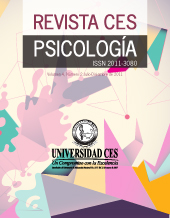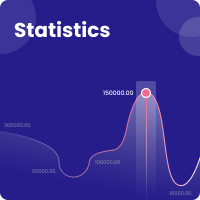Resource Activation in Psychotherapy. How has it been studied and what do we know?: A Systematic Review
DOI:
https://doi.org/10.21615/cesp.13.3.3Keywords:
Resource Activation, Generic Mechanisms of Change, Psychotherapy, Therapeutic Change, Systematic ReviewAbstract
From the first meta-analyzes on effectiveness in psychotherapy, Grawe (1997) theoretically abstracts four trans-theoretical mechanisms related to change, the main one being Resource Activation. This is understood as the use of the patient skills and motivational readiness in the service of a therapeutic objective, as well as the adjustment of therapeutic interventions to these aspects. Based on a systematic review of English and Spanish literature, this article discusses the results of different empirical studies, with the aim of clarifying what we know about the relationship between resource activation and change in psychotherapy. For this review, the search was not restricted by year of publication or methodological design, as long as the Resource Activation mechanism was evaluated and evidence of its relationship with a second variable was provided. The 14 included studies offer evidence mostly in favor of the relationship between Resource Activation and therapeutic results, but with doubts about how and when this mechanism favors or could even hinder change. These doubts are discussed based on the relationship between Resource Activation and different process variables, as well as methodological aspects of the studies. The main limitation of this review is related to the methodological heterogeneity of the included studies, added to the geographical-cultural homogeneity where they were developed, which suggests interpreting with caution both the integration of the evidence and its generalization, pending new studies in different contexts.
Downloads
References
Brockmann, J., Kirsch, H., Hatcher, R., Andreas, S., Benz, S., & Sammet, I. (2011). Dimensions of the Therapeutic Alliance from Patients' View - Development of the "Skala Therapeutische Allianz-Revised STA-R". Psychotherapie Psychosomatik Medizinische Psychologie, 61(5), 208-215. https://doi.org/10.1055/s-0030-1263142
Castronovo, M., Hirsch, H., & Hirsch, P. (s.f.). Guía y esquema gráfico para el uso de los recursos del consultante en terapia estratégica. Recuperado de http://www.enciclopediasaludmental.org.ar/trabajo.php?idt=14&idtt=39
Eysenck, H. J. (1994). Personality: Biological foundations. In P. A. Vernon (Ed.), The neuropsychology of individual differences. London: Academic Press. https://doi.org/10.1016/B978-0-12-718670-2.50011-6.
Flückiger, C., Caspar, F., Grosse Holtforth, M., & Willutzki, U. (2009). Working with patients’ strengths: A microprocess approach. Psychotherapy Research, 19(2), 213-223. https://doi.org/10.1080/10503300902755300
Flückiger, C., Del Re, A. C., Wampold, B. E., & Horvath, A. O. (2018). The alliance in adult psychotherapy: A meta-analytic synthesis. Psychotherapy, 55(4), 316–340. https://doi.org/10.1037/pst0000172
Flückiger, C., & Grosse Holtforth, M. (2008a). Ressourcenorientierte Mikroprozess Analyse (ROMA) - Ressourcendiagnostik und Ressourcenaktivierung im Therapieprozess. (Resource-Oriented Microproces Analysis – ROMA.) [Special issue]. Zeitschrift für Klinische Diagnostik und Evaluation, 1, 171–185.
Flückiger, C., & Grosse Holtforth, M. (2008b). Focusing the therapist’s attention on the patient’s strengths: A preliminary study to foster a mechanism of change in outpatient psychotherapy. Journal of Clinical Psychology, 64, 876-890. https://doi.org/10.1002/jclp.20493
Flückiger, C., Regli, D., Zwahlen, D., Hostettler, S., & Caspar, F. (2010). Der Berner Patienten- und Therapeutenstundenbogen 2000: Ein Instrument zur Erfassung von Therapieprozessen [The Bern Post Session Report for Patients and for Therapists 2000: An instrument to measure therapy processes]. Zeitschrift für Klinische Psychologie und Psychotherapie:Forschung und Praxis, 39(2), 71-79. https://doi.org/10.1026/1616-3443/a000015
Flückiger, C., Zinbarg, R., Znoj, H., & Ackert, M. (2014). Resource activation in generalized anxiety: An observer-based microprocess analysis of patients’ in-session outcomes. Psychotherapy, 51(4), 535–545. https://doi.org/10.1037/a0034119
Gelso, C. J., & Woodhouse, S. (2003). Toward a positive psychotherapy: Focus on human strength. En W. B. Walsh (Ed.), Counseling psychology and optimal human functioning (pp 171-198). NY: Erlbaum.
Gassmann, D., & Grawe, K. (2006). General change Mechanisms: The relation between problem activation and resource activation in successful and unsuccessful therapeutic interactions. Clinical Psychology and Psychotherapy, 13, 1–11. https://doi.org/10.1002/cpp.442
Grawe, K. (1997). Research-informed psychotherapy. Psychotherapy Research, 7, 1–19. https://doi.org/10.1080/10503309712331331843
Grawe K., Donati R., & Bernauer F. (1994). Psychotherapie im Wandel: von derKonfession zur Profession [The change of psychotherapy. From confession to profession]. Göttingen: Hogrefe.
Grawe, K., Regli, D., Smith, E., & Dick, A. (1999). Wirkfaktorenanalyse—ein Spektroskop für die Psychotherapie. Verhaltenstherapie und psychosoziale Praxis, 31, 201–225.
Harbin, J. M., Gelso, C. J., & Rojas, A. E. P. (2014). Therapist work with client strengths: Development and validation of a measure. The Counseling Psychologist, 42(3), 345–373. https://doi.org/10.1177/0011000012470570.
Hatcher, R. L., & Shannon, P. A. (2005). The patient’s collaborative alliance in therapy. unpublished manuscript.
Hirsch, H., Castronovo, M., & Santangelo, L. (2016). ¿Cuáles son los recursos externos al consultante que el terapeuta puede examinar? De Familias y Terapias, 41, 21-30.
Horvath, A. O., & Greenberg, L. (1986). The development of the Working Alliance Inventory. En L. S. Greenberg y W. M. Pisnsof, (Eds.), The Psychotherapeutic Process: A Research Handbook (pp. 529-556). Nueva York: Guilford.
Krause, M., & Altimir, C. (2016). Introduction: Current developments in psychotherapy process research. Estúdios de Psicologia, 37(2-3), 201-225. https://doi.org/10.1080/02109395.2016.1227574
Lambert, M. J., & Ogles, B. M. (2004). The efficacy and effectiveness of psychotherapy. In M. J. Lambert (Ed.), Bergin and Garfield’s handbook of psychotherapy and behavior change (5th ed.). New York: Wiley.
Lipsey, M. W., & Wilson, D. B. (2001). Practical meta-analysis. Thousand Oaks: Sage.
Lopez, S. (2008). Positive psychology: Exploring the best in people. Westport, CT: Praeger Publications.
MacNair-Semands, R. R., Ogrodniczuk, J. S., & Joyce, A. S. (2010). Structure and initial validation of a short form of the Therapeutic Factors Inventory. International Journal of Group Psychotherapy, 60(2), 245–281. https://doi.org/10.1521/ijgp.2010.60.2.245
Mander, J., Wittorf, A., Schlarb, A., Hautzinger, M., Zipfel, S., & Sammet, I. (2013). Change mechanisms in psychotherapy: Multiperspective assessment and relation to outcome. Psychotherapy Research, 23(1), 105–116. https://doi.org/10.1080/10503307.2012.744111
Mander, J., Wittorf, A., Klingberg, S., Teufel, M., Zipfel, S., & Sammet, I. (2014). The patient perspective on therapeutic change: The investigation of associations between stages of change and general mechanisms of change in psychotherapy research. Journal of Psychotherapy Integration, 24(2), 122–137. https://doi.org/10.1037/a0036976
Mander, J., Jacob, G., Götz, L., Sammet, I., Zipfel, S., & Teufel, M. (2015a). Associations between Grawe’s general mechanisms of change and Young’s early maladaptive schemas. Psychotherapy Research, 25(2), 249–262. https://doi.org/10.1080/10503307.2014.889330
Mander, J., Schlarb, A., Teufel, M., Keller, F., Hautzinger, M., Zipfel, S., … Sammet, I. (2015b). The Individual Therapy Process Questionnaire: Development and Validation of a Revised Measure to Evaluate General Change Mechanisms in Psychotherapy. Clinical Psychology and Psychotherapy, 22, 328-345. https://doi.org/10.1002/cpp.1892
Moher, D., Liberati, A., Tetzlaff, J., Altman, D.G., & The PRISMA Group. (2009). Preferred Reporting Items for Systematic Reviews and Meta-Analyses: The PRISMA Statement. Open Med, 3(3), 123-130.
Munder, T., Wilmers, F., Leonhart, R., Linster, H.W., & Barth, J. (2010). Working Alliance Inventory-Short Revised (WAI-SR): Psychometric properties in outpatients and inpatients. Clinical Psychology and Psychotherapy, 17(3), 231-239. https://doi.org/10.1002/cpp.658
Norcross, J. C., & Wampold, B. E. (2011). Evidence-based therapy relationships: Research conclusions and clinical practices. Psychotherapy, 48(1), 98–102. https://doi.org/10.1037/a0022161
Regli, D., & Grawe, K. (2000). Die Berner Stundenbogen Version 2000—ein Forschungsinstrument [The Bern postsession reports—Research instrument. Unpublished manuscript, University of Bern, Bern, Switzerland.
Schaller, G., Blanck, P., Vogel, E., Vonderlin, E., Bents, H., & Mander, J. (2018). Therapeutic processes in group therapy: Intersections between general change mechanisms and motivational stages of change from patient perspective, European Journal of Psychotherapy & Counselling, 20(3), 312-336. https://doi.org/10.1080/13642537.2018.1495247.
Scheel, M., Davis, C., & Henderson, J. (2012). Therapist use of client strengths: a qualitative study of positive processes. The Counseling Psychologist, 20(10) 1-36.
Sander, L., Zobel, I., Dykierek, P., & Schramm, E. (2013). Common Factors in the treatment of chronic depression. Comparison of 2 psychotherapy methods. Verhaltenstherapie, 22, 228–235. https://doi.org/10.1159/000345644
Seligman, M.E.P., & Csikszentmihalyi, M. (2000). Positive psychology: An introduction. American Psychologist, 55, 5-14.
Smith, M. L., & Glass, G. V. (1977). Meta-analysis of psychotherapy outcome studies. American Psychologist, 32, 752-760. https://doi.org/10.1037/0003-066X.32.9.752
Smith, E., & Grawe, K. (2003). What makes psycho-therapy sessions productive? A new approach to bridging the gap between process research and practice. Clinical Psychology and Psychotherapy, 10, 275– 285. https://doi.org/10.1002/cpp.377
Smith, E., & Grawe, K. (2005). Which therapeutic mechanism Works when? A step towards the formulation of empirically validated guidelines for therapists’ session-to-session decisions. Clinical Psychology and Psychotherapy, 12, 112–123. https://doi.org/10.1002/cpp.427
Stangier, U., Von Consbruch, K., Schramm, E., & Heidenreich, T. (2010). Common factors of cognitive therapy and interpersonal psychotherapy in the treatment of social phobia. Anxiety, Stress, & Coping, 23(3), 289-301. https://doi.org/10.1080/10615800903180239
Tarragona, M. (2006). Las Terapias Posmodernas: Una breve Introducción a la Terapia Colaborativa, la Terapia Narrativa y la Terapia Centrada en Soluciones. Psicología Conductual. 14(3) 511-532.
Tarragona, M. (2013). Psicología Positiva y Terapias Constructivas: Una Propuesta Integradora. Terapia psicológica, 31(1), 115-125.
Trösken, A. K., & Grawe, K. (2003). Das Berner Ressourceninventar—Instrumente zur Erfassung von Patientenressourcen aus der Selbst und Fremdbeurteilsperspektive [The Bern resource inventories—Instruments of assessing patients resources for self and observer report]. In H., Schemmel & J. Schaller (Eds.), Ressourcen. Ein Hand- und Lesebuch zur therapeutischen Arbeit (pp. 195–217). Tübingen, Germany: dgvt.
Vogel, E., Blanck, P., Bents, H., & Mander, J. (2016). Wirkfaktoren in der Gruppentherapie: Entwicklung und Validierung eines Fragebogens [Effective factors in group therapy: Development and validation of a questionnaire]. Psychotherapie, Psychosomatik, Medizinische Psychologie, 66(5), 170–179. https://doi.org/10.1055/s-0042-104495
von Consbruch, K., Flückiger, C., Stangier, U., Beutel, M., Herpertz, S., Hoyer, J… Wiltink, J. (2013). WIFA-k: Ein neues Messinstrument zur zeitökonomischen Erfassung allgemeiner Wirkfaktoren nach Grawe. [WIFA-k: A new instrument for a time-efficient assessment of common factors in psychotherapy]. Psychotherapie, Psychosomatik, Medizinische Psychologie, 63, 286–289. https://doi.org/10.1055/s-0032-1331206
Wampold, B., & Imel, Z. E. (2015). The great psychotherapy debate: The evidence for what makes psychotherapy work (2nd ed.). New York, NY: Routledge.
Young, J. E. (1990). Cognitive therapy for personality disorders: A schema-focused approach. Sarasota, FL: Professional Resource Exchange.
Znoj, H.-J., Messerli-Burgy, N., Tschopp, S., Weber, R., Christen, L., Christen, S., & Grawe, K. (2010). Psychotherapeutic process of cognitive_behavioral intervention in HIV-infected persons: Results from a controlled, randomized prospective clinical trial. Psychotherapy Research, 20(2), 203-213. https://doi.org/10.1080/10503300903246663
Downloads
Published
How to Cite
Issue
Section
License
Copyright (c) 2020 CES Psicología

This work is licensed under a Creative Commons Attribution-NoDerivatives 4.0 International License.
Each manuscript is accompanied by a statement specifyingThat the materials are unpublished, that have not been previously published in printed formatElectronic and that they will not be presented to any other means before knowing the decision of the magazine. ThroughoutIn case, any previous publication, sea in printed or electronic form, must be made known to the editorial staffWriting The authors attach a signed statement stating that, and the manuscript is acceptedFor publication, the rights of reproduction are the exclusive property of the Journal CES Psychology.| Article metrics | |
|---|---|
| Abstract views | |
| Galley vies | |
| PDF Views | |
| HTML views | |
| Other views | |




